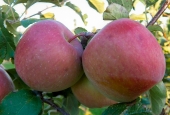Here are three more methods to manage deer. The land around our gardens is managed as a wildlife refuge. We have deer, (but not a lot of them) and rabbits - quite a few.
METHOD 1. I manage all the animals by PLANTING THINGS THEY ESPECIALLY LOVE TO EAT. Thus they concentrate on those plants as they move through the yard and leave my plants alone for the most part. I have to fence in small areas planted with their other favorites, strawberries, beans and raspberries. Rabbits love clover so I have encouraged big patches of clover in all the grassy areas. Now the rabbits come out to eat the clover at dusk - and they do not eat my veggies. Deer particularly love FIREWEED AND NORTHERN WILLOWHERB so I let these plants to grow along the path edges. The deer take a mouthful as they walk on by. This protects my other plants and the results are bushy plants and a great show when they finally flower. I do use some of your other fencing techniques. It absolutely necessary to encircle young fruit trees with fence until they are about 6 years old. I encourage them to grow above the browse line asap by fertilizing and pruning to one leader for upward growth. Once above the browse line, the trees can grow freely and be pruned into fruit tree shapes. It must be said that sometimes it is wise and necessary to harvest a female deer to plan for the future and keep their population in check. Knowing how many deer groups are in an area is important to figure out which one. Like coyotes, we want to keep the ones who know how to co-exist with people in an area because they will teach the next generations.
METHOD 2. Newly planted seeds and tender seedlings are much relished by wildlife. They are at the most risk until they are a few inches tall. I lay PIECES OF WIRE FENCING flat on the ground over the newly planted areas and leave them until the plants are about 4 inches tall. This deters everything, birds, deer and expecially CATS. CAVEAT - the area MUST be kept weeded and the fence removed before the plants get too big or it will have to be left in place until the end of the crop. FLAT FENCING is a great system when used for planting in succession - ex, lettuces every 3 or 4 weeks - just move the fence pieces from one bed to the next. Old junk pieces of fence are an indispensable part of my gardening system. Light weight fence pieces can be tented, or bent in an arc to protect taller young plants, or kept flat on the ground. 2X4 hole fencing is my favorite - but anything heavier than chicken wire is fine. An ideal size is 3' x 5', but I use what I have, which is a hodge-podge of different sizes and shapes, like my garden beds. Nipping off the edge prongs prevents snagging, (bending them doesn't work), and using manageable sizes to protect the delicate plants is the best way to work this Flat Fence system. This is a good way to use those short pieces of fence that are laying around!
METHOD 3. I talk kindly to the animals and tell them what they can and cannot do and eat in my space.
I am deeply aware that I share this land with animals and they are an integral and important part of this ecological system. Since their presence benefits both the land and me, I must leave space and native food for them to live. Keeping the system balanced benefits all of us so we can thrive and flourish.







